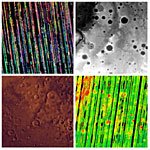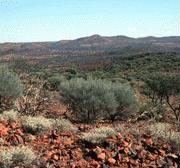Looking for Hydrothermal Systems on Mars: An Integrated Study of Spectroscopic, Thermal, and Imaging Data
When: September 8, 2003 12AM PDT

Life on Earth thrives and may have originated in areas of hydrothermal activity, where water, energy and biogenic elements were available. Hydrothermal environments on Earth are characterized by the presence of a wide variety of mineral species. Minerals characteristic of hydrothermal systems (both fossil and active) can be identified through their reflectance or emissivity spectra. The large variety of mineral species present in hydrothermal systems on Earth translates into a large amount of spectral variance.
We will describe a new methodology developed to identify, from Mars Global Surveyor Thermal Emission Spectrometer (MGS-TES) data, areas of high spectral variance on Mars, relative to the average of the planet, and therefore dominated spectrally by the presence of formations of diverse mineralogy, rather than by mostly homogeneous dust. Areas of high spectral variance are then analyzed utilizing MGS-Mars Orbiter Camera (MOC), MGS-Mars Orbiter Laser Altimeter (MOLA), and Mars Odyssey-Thermal mission Imaging System (THEMIS) as well as thermal inertia measurements derived from the MGS-TES data. Preliminary results obtained utilizing this synergistic approach indicate the suitability of this method to identify the mineralogy of Mars, both recognizing previously known mineral occurrences, as well as detecting new ones.
 A Record of the Earliest (4.5-3.8 Ga) Surface Conditions on Earth?
A Record of the Earliest (4.5-3.8 Ga) Surface Conditions on Earth? Simulating Groundwater Radiolysis With Oxidation of Pyrite by Hydrogen Peroxide Solution
Simulating Groundwater Radiolysis With Oxidation of Pyrite by Hydrogen Peroxide Solution Exploring Planet-Forming and Debris Disks
Exploring Planet-Forming and Debris Disks Quantifying Water Production in Comets - The "Meter Stick" for Their Chemical Taxonomy
Quantifying Water Production in Comets - The "Meter Stick" for Their Chemical Taxonomy